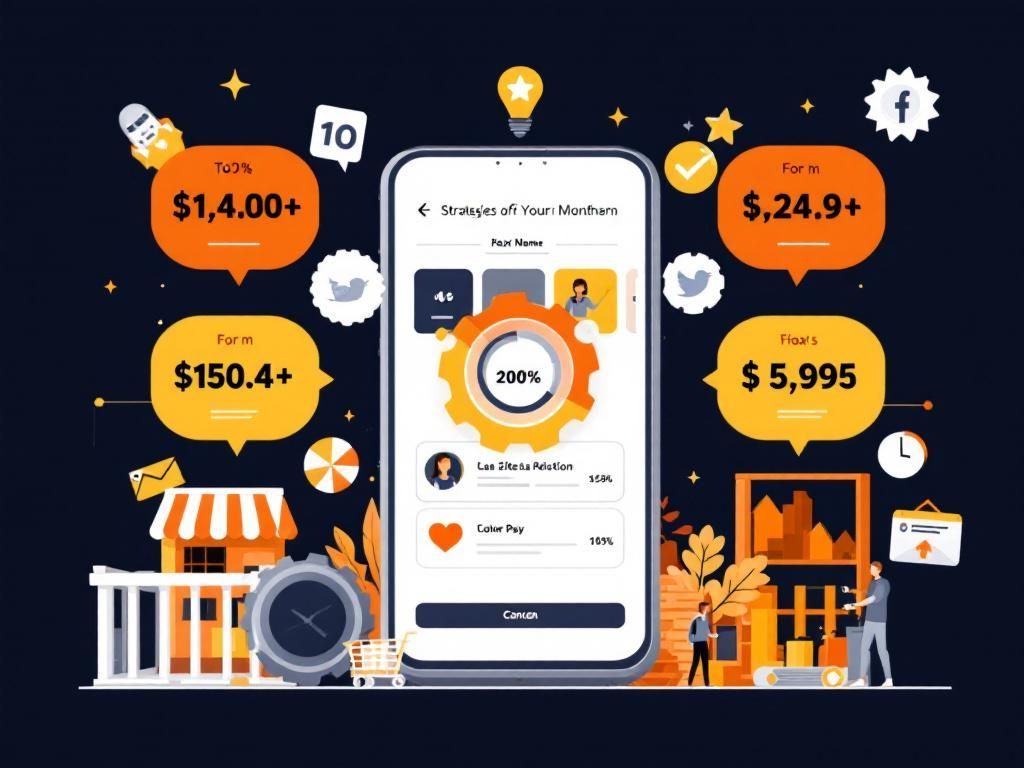Top Mobile App Strategies for BYOD Success
Discover effective mobile app strategies to ensure success in your BYOD (Bring Your Own Device) initiatives for businesses.

In today’s fast-paced business environment, the use of personal devices in the workplace has become a common practice. Bring Your Own Device (BYOD) policies are gaining traction as companies recognize the benefits of allowing employees to use their personal smartphones and tablets for work-related tasks. However, implementing a successful BYOD strategy involves careful planning and execution. This article explores effective mobile app strategies that can help organizations leverage BYOD to enhance productivity while ensuring security and compliance.
Table of Contents
Understanding the BYOD Paradigm
BYOD policies are designed to strike a balance between convenience and security. Employees prefer using devices they are familiar with, which can lead to increased job satisfaction and productivity. However, it also raises significant challenges such as data security, compliance, and support for multiple operating systems.
Key Benefits of BYOD
- Increased Productivity: Employees can work from anywhere, leading to flexible working hours and higher output.
- Cost Savings: Companies save on hardware costs as employees use their own devices.
- Employee Satisfaction: Workers prefer using devices they are comfortable with, which can enhance their overall work experience.
Challenges in Implementing BYOD
While BYOD offers numerous benefits, organizations must also consider potential hurdles:
Security Risks
Personal devices may not have the same level of security as corporate devices, making sensitive company data vulnerable to breaches.
Compliance Issues
Companies in regulated industries must navigate compliance requirements, ensuring that personal devices meet necessary standards.
Device Management
Supporting a diverse range of devices and operating systems can strain IT resources.
Effective Mobile App Strategies for BYOD
To maximize the effectiveness of BYOD, companies should adopt comprehensive mobile app strategies:
1. Implement Mobile Device Management (MDM)
Investing in MDM solutions can help secure personal devices and ensure compliance with company policies. MDM solutions typically offer features such as:
- Remote wipe capabilities to erase data if a device is lost or stolen.
- Access control to restrict sensitive applications and data.
- Device tracking to monitor compliance with security protocols.
2. Develop Custom Mobile Applications
Creating tailored mobile applications for your organization can enhance productivity and ensure security. Here’s how:
- Identify Business Needs: Conduct assessments to determine which applications can improve workflows.
- Focus on User Experience: Ensure the app is user-friendly, promoting quick adoption among employees.
- Regular Updates: Maintain the application with regular updates to enhance functionality and security.
3. Enforce Strong Security Policies
Establishing robust security measures is paramount when allowing personal devices in the workplace. Consider the following:
| Security Measure | Description |
|---|---|
| Encryption | Encrypt data stored on devices to protect sensitive information. |
| Multi-Factor Authentication | Implement additional verification steps to access corporate resources. |
| Regular Security Training | Provide ongoing training to employees about potential threats and safe practices. |
4. Foster a Culture of Security Awareness
Educating employees about security risks associated with BYOD is crucial. Initiate programs that inform staff about:
- Phishing attacks and how to recognize them.
- The importance of keeping software updated.
- Best practices for using Wi-Fi networks securely.
5. Monitor and Analyze Data Usage
Regularly monitoring how data is used across personal devices can help identify unusual patterns and potential breaches. Utilize analytics tools to:
- Assess application usage and detect unauthorized access.
- Evaluate data consumption to ensure compliance with data policies.
- Make informed decisions about resource allocation and support needs.
Future Trends in BYOD
The BYOD landscape is continuously evolving, presenting new opportunities and challenges. Here are some emerging trends that could shape the future of BYOD:
1. Remote Work Normalization
The rise of remote work has made BYOD policies even more critical, as employees require access to company resources from various locations.
2. Increased Use of Cloud Services
Cloud-based applications are becoming more prevalent, allowing for seamless access to data across multiple devices while simplifying security management.
3. Greater Focus on Employee Privacy
As companies implement MDM solutions, balancing the need for security with the protection of employee privacy will be essential.
Conclusion
Implementing a successful BYOD strategy is not without its challenges, but with the right mobile app strategies in place, organizations can harness the benefits of personal devices while maintaining security and compliance. By focusing on MDM, custom applications, strong policies, and fostering a culture of security awareness, companies can navigate the complexities of BYOD and enhance overall productivity. As the mobile landscape continues to evolve, staying ahead of trends will be crucial for organizations seeking long-term success.
FAQ
What is BYOD and why is it important for businesses?
BYOD stands for ‘Bring Your Own Device’, allowing employees to use their personal devices for work purposes. It is important because it can enhance employee satisfaction, increase productivity, and reduce hardware costs for businesses.
What are the top mobile app strategies for successful BYOD implementation?
Key strategies include developing user-friendly apps, ensuring robust security measures, offering training for employees, creating clear BYOD policies, and providing support for various device types.
How can businesses ensure data security in a BYOD environment?
Businesses can ensure data security by implementing mobile device management (MDM) solutions, enforcing strong password policies, and requiring encryption for sensitive data.
What role does user training play in BYOD success?
User training is crucial as it helps employees understand the risks associated with BYOD, how to use the apps effectively, and the importance of following company policies.
How can companies balance employee privacy and data security in BYOD?
Companies can balance privacy and security by establishing clear policies that define what data can be accessed, how it will be monitored, and ensuring transparency with employees regarding data usage.
What are the common challenges businesses face with BYOD?
Common challenges include managing diverse devices, ensuring security compliance, addressing potential data breaches, and maintaining employee satisfaction while managing productivity.



